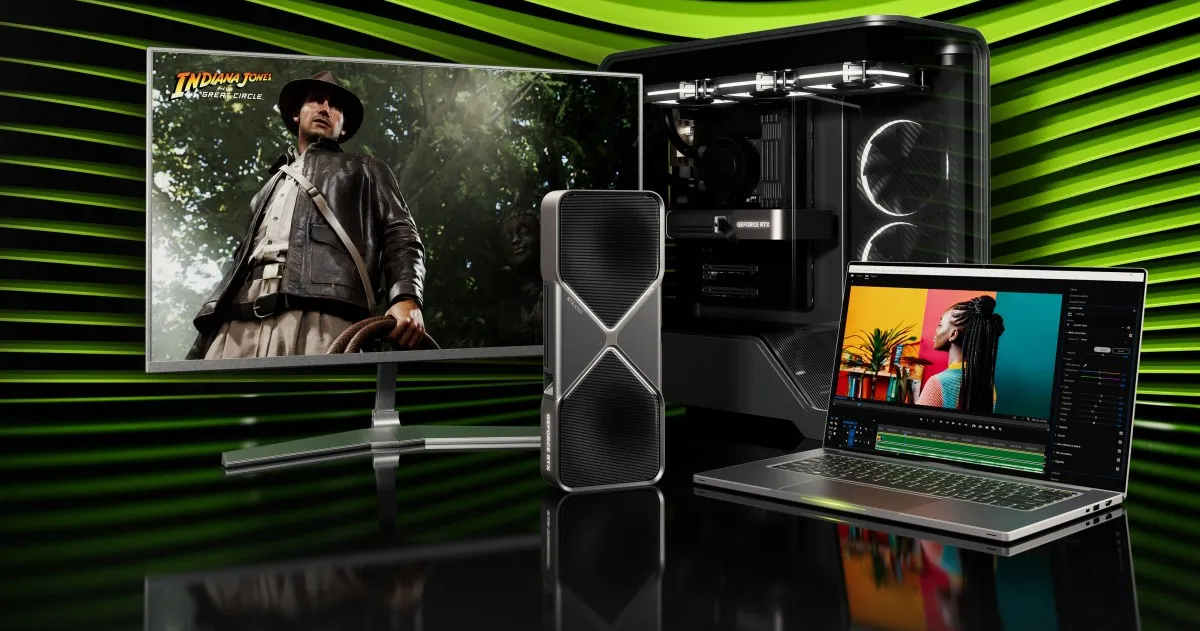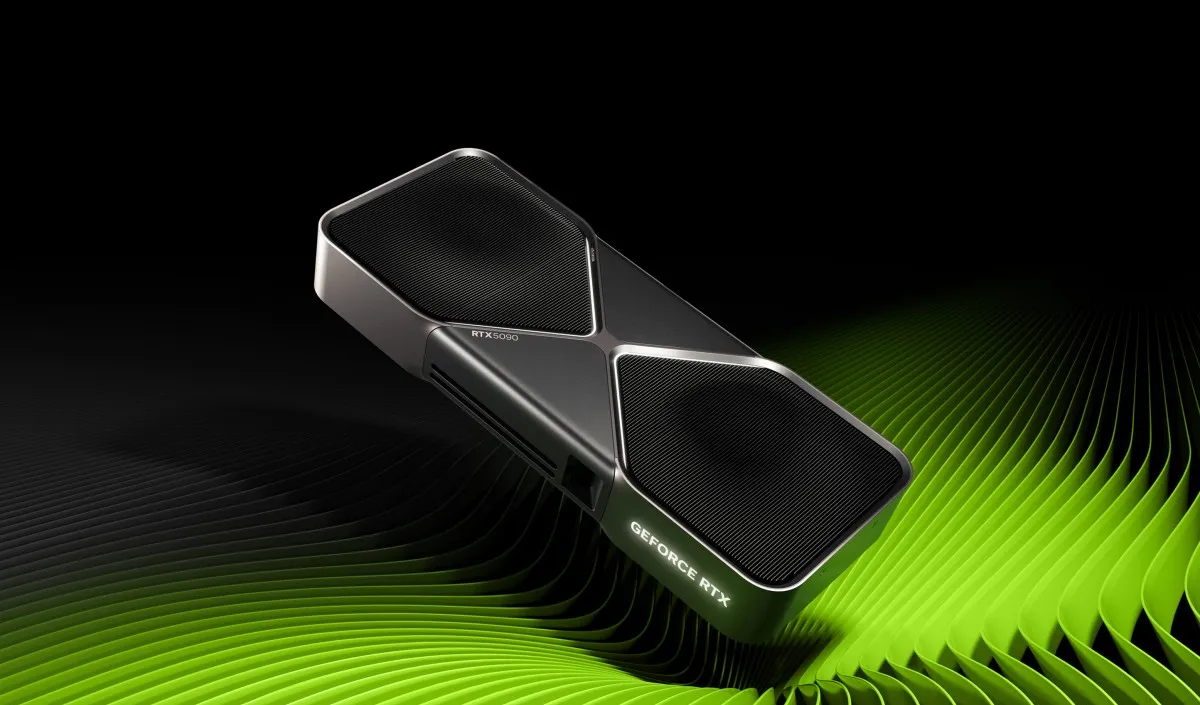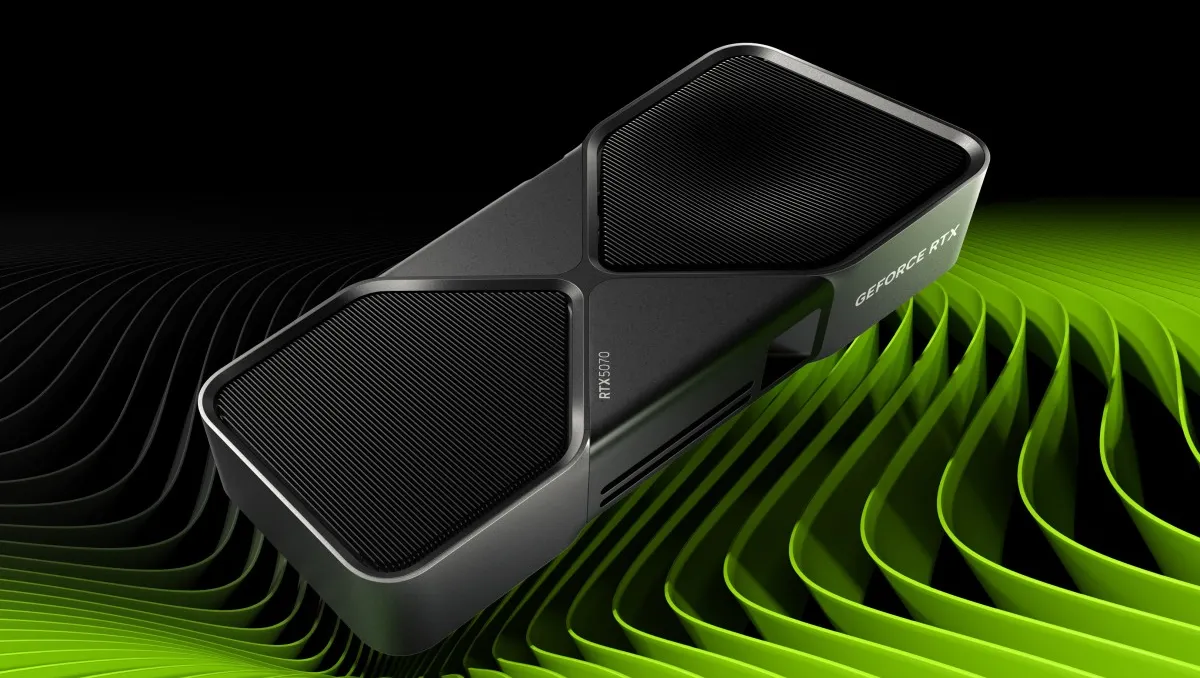How Does DLSS 4 in Nvidia RTX 50-Series Boost Gaming Performance?

The GeForce RTX 50 series, Nvidia’s upcoming desktop and mobile graphics processors, were released today. The current product stack consists of the desktop and mobile versions of the RTX 5090, RTX 5080, RTX 5070 Ti, and RTX 5070, all of which are based on the most recent Blackwell architecture.
GDDR7 memory is quicker in all four of the versions that were announced. All of the cards now support PCIe 5.0, the most recent DisplayPort 2.1b UHBR20 (80Gbps), and HDMI 2.1b (48Gbps), indicating an improvement in connectivity. Along with the impending Reflex 2 with Frame Warp, all 50-series cards will also support DLSS 4.
Additionally, Nvidia launched DLSS 4, the most recent iteration of their Deep Learning Super Sampling image reconstruction method. Multi-frame generation, the primary new feature of DLSS 4, replaces the previous practice of replacing a single AI-produced frame with the creation and insertion of three AI-created frames in between each pair of conventionally generated frames.
To produce these new frames with greater accuracy and quality than previously possible, the method makes use of the 50-series cards’ greatly enhanced Tensor processing. As a result, only cards from the 50 series have this function.
GeForce RTX 5090 Price & Features
The RTX 5090 costs $1,999.00 which is 33% more than the RTX 4090. It will go on sale on January 30.

With 66% more ray tracing TFLOPS and 154% more AI TOPS, the flagship RTX 5090 boasts 32% more CUDA cores than the RTX 4090. Additionally, you get 8GB of faster video memory on a 512-bit memory bus. Nvidia is aiming for 575W for the 5090, however the new Founders Edition card only manages to use a dual-slot design with two flow-through fans. Power consumption has also increased.
GeForce RTX 5080 Features & Price
The RTX 5080 has a slight 5% boost in CUDA cores over the 4080 Super, and its Tensor and Ray Tracing performance has a similarly modest improvement over the 5090. Memory stays at 16GB, although it uses the same 256-bit memory bus but has faster GDDR7. The 4080 Super’s power has also increased, however little, from 320W to 360W.

The RTX 5080 costs $999, which is less than the RTX 4080’s initial pricing of $1199 and the same as the RTX 4080 Super. On January 30, the 5080 will also be accessible.
GeForce RTX 5070 Features & Price
Lastly, the RTX 5070 Ti costs $749, which is $50 cheaper than the 4070 Ti and 4070 Ti Super’s launch prices, while the RTX 5070 costs $549, which is $50 less than the 4070 Super and the same as the 4070. In February, the 5070 and the 5070 Ti will be accessible.

Additionally, for features like DLAA, super resolution, and ray reconstruction, the company is moving away from CNN-based models and toward transformer-based solutions. In reconstructed images, this reduces artifacts like ghosting, aliasing, and smearing and produces an image with improved temporal stability and image detail. All RTX cards, including those from the 20 series, will soon receive these new DLSS 4 improvements. Rather than waiting for game updates, users may just activate these features in already-existing games via the Nvidia app.



